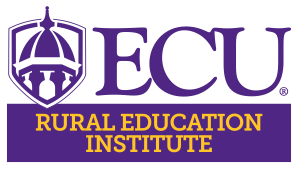Call for Special Issue on Rural STEM Teacher Development
Fall 2022
Keywords:
rural education, STEM education, teacher developmentAbstract
This issue explores the complexities, practices, and challenges and opportunities facing rural schools and universities as they design, implement STEM teaching and learning. Articles might address issues such as:
- Recruiting and retaining a skilled STEM teaching workforce
- Technology and networking solutions to support/enhance STEM teaching and learning
- Partnerships to improve and support STEM teaching and/or learning
- Advantages, challenges, and/or opportunities to teaching STEM in rural communities
- Making STEM teaching and learning relevant in rural schools
- Community-based curriculum initiatives
- Using local knowledge in STEM education
- Promising and effective educational practices in rural schools STEM education
- Educator preparation for rural STEM teaching
References
Kin10. (2019, June 4). Lack of STEM teachers means fewer graduates for critical roles. https://100kin10.org/news/lack-of-stem-teachers-means-fewer-graduates-for-critical-roles
Brownell, M. T., Bishop, A. M., & Sindelar, P. T. (2005). NCLB and the demand for highly qualified teachers: Challenges and solutions for rural schools. Rural Special Education Quarterly, 24(1), 9.
Buffington, P. (2019, May 28). Igniting STEM education in rural communities. Education Development Center. Retrieved from https://www.edc.org/igniting-rural-stem
Darling-Hammond, L. (1999). Teaching quality and student achievement: A review of state policy evidence. Seattle: University of Washington, Center for the Study of Teaching and Policy.
Lavalley, M. (2018). Out of the Loop: Rural schools are largely left out of research and policy discussions, exacerbating poverty, inequity, and isolation, Center for Public Education. Retrieved from https://cdn-files.nsba.org/s3fs-public/10901-5071_CPE_Rural_School_Report_Web_FINAL.pdf
Levin, H. M. (1985). Solving the shortage of mathematics and science teachers. Educational Evaluation and Policy Analysis, 7(4), 371-382.
Monk, D. H. (2007). Recruiting and retaining high-quality teachers in rural areas. The Future of Children, 17(1), 155-174.
National Assessment of Educational Progress. (2019). NAEP report card: 2019 NAEP mathematics assessment. Retrieve from https://www.nationsreportcard.gov/highlights/mathematics/2019/
Rumberger, R. W. (1987). The impact of salary differentials on teacher shortages and turnover: The case of mathematics and science teachers. Economics of Education Review, 6(4), 389-399. http://dx.doi.org/10.1016/0272-7757 (87) 90022-7
Showalter, D., Hartman, S. L., Johnson, J., & Klein, B. (2019). Why rural matters: The time is now. Washington, D.C: Rural School and Community Trust. Available at http://www.ruraledu.org/WhyRuralMatters.pdf
Downloads
Published
How to Cite
Issue
Section
License
Copyright (c) 2020 Janet K Stramel, Earl Legleiter

This work is licensed under a Creative Commons Attribution-NonCommercial 4.0 International License.
Copyright Notice
Articles will be published using a Creative Commons Attribution Non-commercial Sharealike license. (For more information on this license, please visit the Creative Commons license page.) Please also note that the authors are explicitly granting permission for Academic Library Services to store a copy of the article in The ScholarShip, ECU's Institutional Repository under the terms of the current ScholarShip license. As a North Carolina agency, ECU contributes copies of all publications to the North Carolina State Archives.


